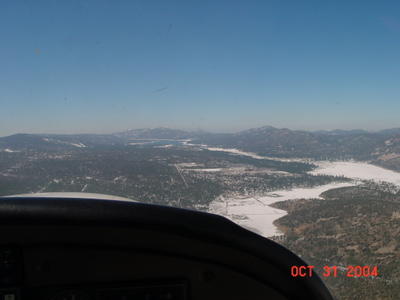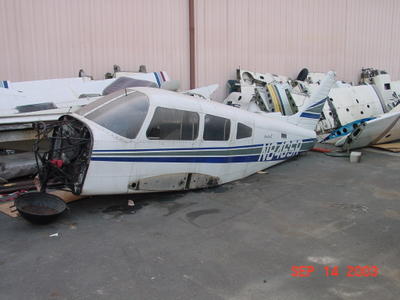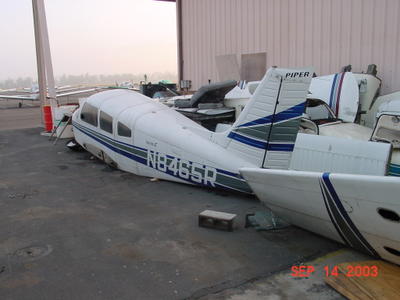Catalina Approach
The last time I flew out to Catalina I was only 6 months old. Decades later my dad and I made the trip again. It was a cool, clear, winter Southern California morning. A morning that was beconing us to take to the sky.
While a student pilot I did not get an opportunity train at Catalina because my flight school's insurance company would not cover flight operations at Catalina. So this flight was my first as pilot-in-command. My dad took lots of photos... enjoy:
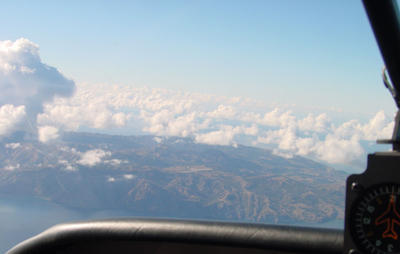
At 3,500 feet above the water on approach to Catalina (AVX). SoCal Approach has signed us off and we're squawking 1200. The airport is in sight... can you see it?
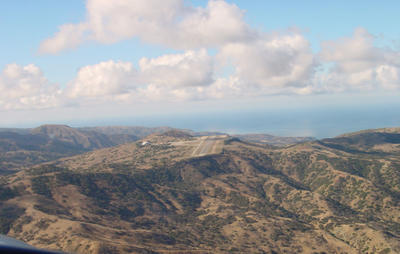
Okay, I know you can see the airport now :) We're in a right pattern for runway 22. We've just turned long final at about 2 miles from the threshold. Landing at Catalina is tricky. The runway is not particularly long at 3,000 feet. Its basically cliff on each end so there's no room for error. Plus the runway is arched so the runway appears shorter when viewed from the surface.
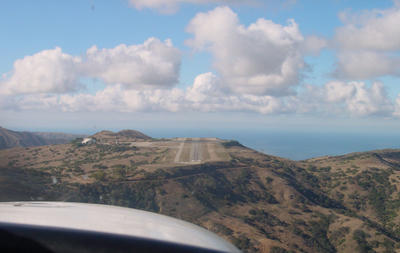
Now we're less than a mile from the runway threshold. One thing you will notice from this photo is that unlike most runways, the up-slope of the hill creates an optical illusion that you are too low. Unfortunately Catalina doesn't have a VASI or PASI so you are on your own when it comes to judging your approach slope.
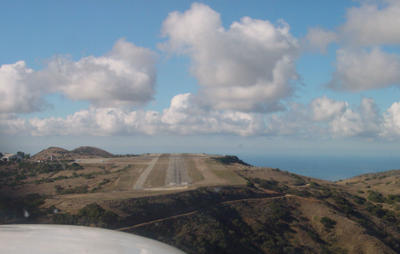
We're now a half mile away on short final. Now is the time to pay special attention to the winds. The upslope hills create turbulence that can make landing a challenge. Do yourself a favor, and have a slightly steeper approach. Careful your speed, the runway is only 3,000 feet long so if your final approach is to fast you can find yourself running uncomfortably close to the end of the runway on the roll-out.
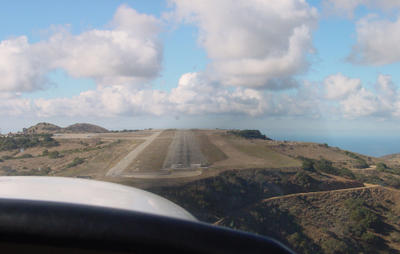 Just about to the threshold. Now is the time to consider a go-around. Catalina is a very challenging airport to land at. There is no shame in going around!
Just about to the threshold. Now is the time to consider a go-around. Catalina is a very challenging airport to land at. There is no shame in going around!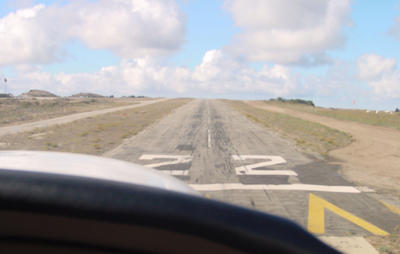 Ah, a safe landing. There's nothing more satisfying. Now that we're on the ground its time to get out your $20 landing fee.
Ah, a safe landing. There's nothing more satisfying. Now that we're on the ground its time to get out your $20 landing fee.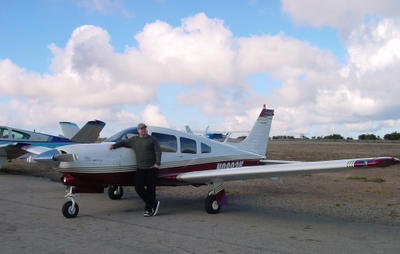 On the ramp next to just about the nicest 1978 Piper Turbo Arrow III that you can find.
On the ramp next to just about the nicest 1978 Piper Turbo Arrow III that you can find.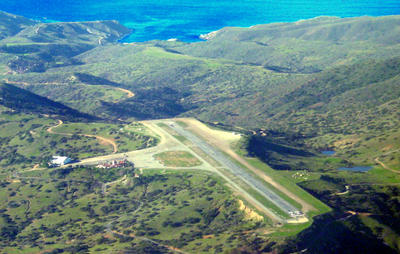
Here's a nice photo of Catalina looking west. Its perched on the top of a hill at 1,602 feet above the surf. My father and I like go to Catalina. Its a nice trip across the channel. From lift-off to landing El Monte Airport is about 35 minutes away. In the terminal is a great little restaurant called the "Runway Cafe."
Here are some links to more information about Catalina:
